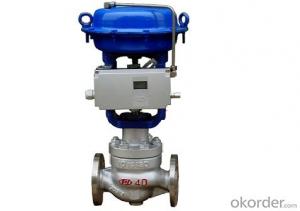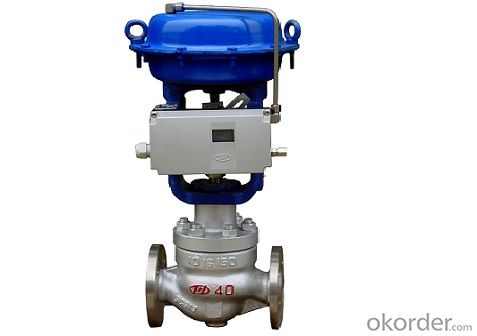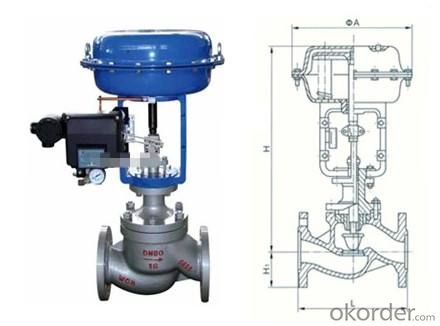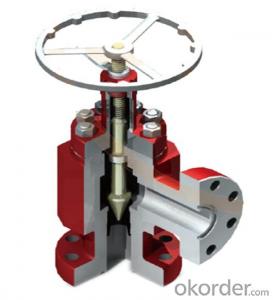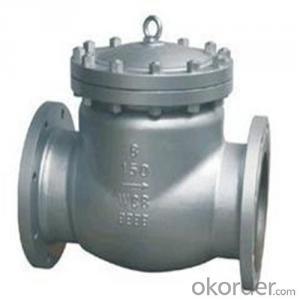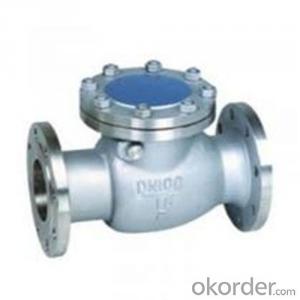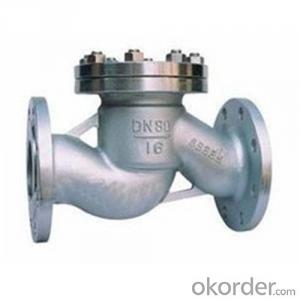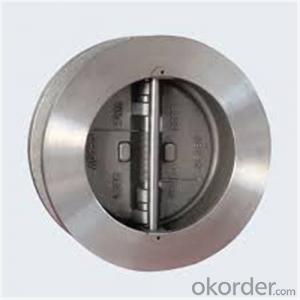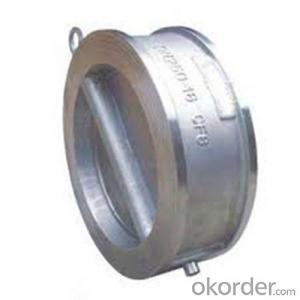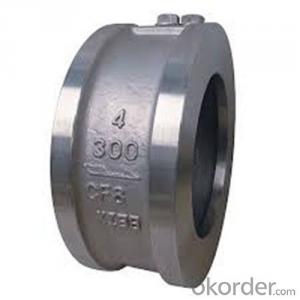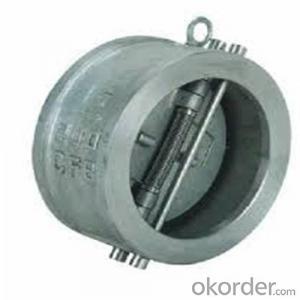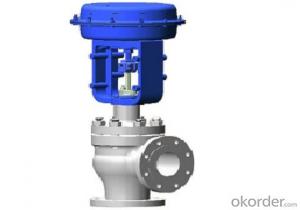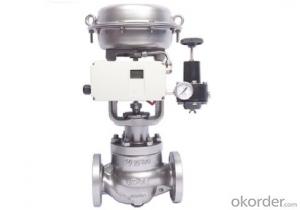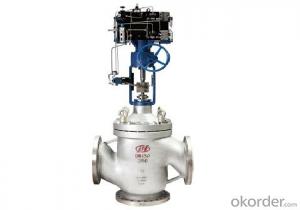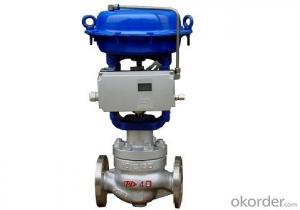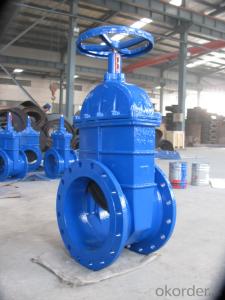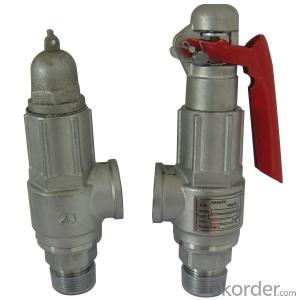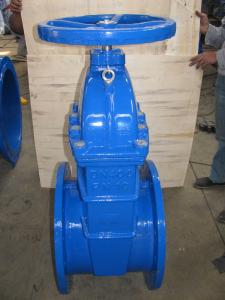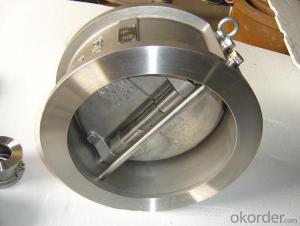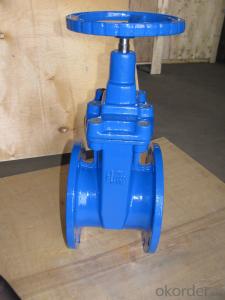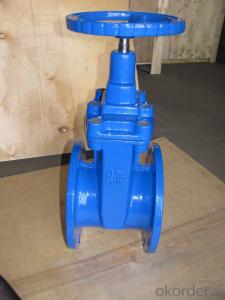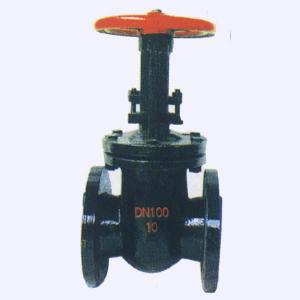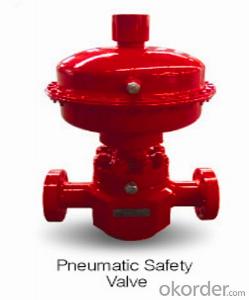Single –seated Control Valve Made In China Best Price
- Loading Port:
- Shanghai
- Payment Terms:
- TT OR LC
- Min Order Qty:
- 100 pc
- Supply Capability:
- 1000 pc/month
OKorder Service Pledge
OKorder Financial Service
You Might Also Like
1.Description Of Single –seated Control Valve
HPS High pressure Single seated Control Valve has a top-guided valve plug, a compact valve body and an S-shape flow passage that features low pressure loss, allows a large flow capacity, rangeability and high accuracy flow characteristics, complies with the
IEC534-2-1976 standards. The valve plug is highly vibration-resistant as it is held by a top guide section which has a large sliding area. The leakage complies with the ANSI B16.104 standards. The actuator integrated with simplest mechanisms utilizes a compact yet powerful diaphragm actuator loaded with multiple springs or a cylinder .The Model HPS Control Valves are widely
applicable for reliable control of high temperature, high pressure process lines.This product complies with the GB/T4213-2008
standards.
2.Features Of Single –seated Control Valve
Single seated Control Valve has a top-guided valve plug, a compact valve body and an S-shape flow passage that features low pressure loss, allows a large flow capacity, rangeability and high accuracy flow characteristics, complies with the IEC534-2-1976 standards. The leakage complies with the ANSI B16.104 standards. The actuator integrated with simplest mechanisms utilizes a compact yet powerful diaphragm actuator loaded with multiple springs or a cylinder.
3.Specifications Of Single –seated Control Valve
| Type | Straight-through, single seated, cast globe valve | ||
| Normal size | G1/2”~250mm | ||
| Pressure rating | ANSI Class 125~2500; PN 1.6~32 MPa * | ||
| Rated CV value | 0.005~820 | ||
| End connections | Flanged:FF、RF、RJ、TG、MFM Welded end: SW(40~50mm);BW(65~250mm) | ||
| Body & Bonnet Material | SCPH2/WCB,SCPH21/WC6,SCS13A/CF8,SCS14A/CF8M,SCS16A/CF3M,Ti and other alloy steels .etc. | ||
| Trim Material | SUS304,SUS304+Stellite,SUS316,SUS316+Stellite,SUS304L,SUS316L,Monel, Hastelloy C .etc. | ||
| Fluid Temperature | -196~+566℃ | ||
| Rangeability | 50∶1 | ||
| Flow characteristics | Linear,EQ% | ||
| Seat Leakage | Metal seat | Rated Cv0.01% ANSI Class IV | |
| Soft seat | Bubble-tight ANSI Class VI | ||
Actuator | HA Pneumatic Diaphragm type VA/VP Cylinder piston type EIL Electronic type M8 Intelligent type | ||
4.Body Of Single –seated Control Valve
| Type | Straight-through, single seated, cast globe valve |
| Normal size | 25、40、50、80mm |
| Pressure rating | ANSI Class 900, 1500, 2500; JIS 63K * * |
| End connections | Flanged:RF、RJ Welded end: SW(25~80mm);BW(80mm) |
| Bonnet type | (P) Plain type :-17~+230℃ (EI)Extension Type I:+230~+566℃ |
| Gland type | Bolted gland |
| Packing | Teflon fiber and JM397 Grafoil, .etc. |
| Gasket | Flat type, Saw-tooth type (Carbon steel, Stainless steel or other alloy steels) |
| Painting color | Munsell N-6(Epoxy resin group)is standard. In the case of stainless steel body, no painting is standard. |
5.Applications Of Single –seated Control Valve
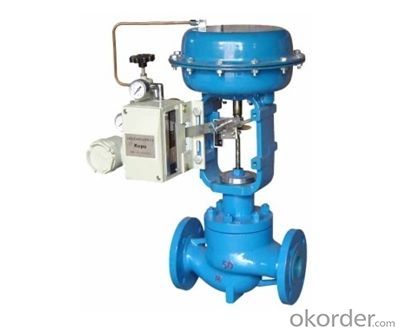
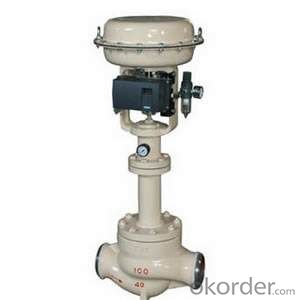
6.Applications Of Single –seated Control Valve
Single-seated Control Valves are widely applicable for reliable control with low leakage , high control precision in high or low temperature, high pressure process lines.
FAQ
Q1:How Can I Get A Sample?
A1:You can get samples by communicate with our export sales.
Q2:How Long Is Delivery?
A2:Delivery time will be30-45days according to order quantity.
Q3:What Is The MOQ?
A3:MOQ depends on different items.
Q4:What Is Our Normal Payments Terms?
- Q: when there is fire in the building, the solenoid valve is activated but what happen inside the cylinder actally?
- If the pressure in any one zone is different than the other zones it could be one of two reasons; either the pressure is high (usually due to one or more sprinkler heads not poping up), or its low (usually due to a leak in the pipes). Something that could cause low pressure in all the zones are an obstruction in the water line above the valves (unlikely), or a hole in the line above the valve (the water would be filling the valve box and causing damage to the lawn wherever it is located), or leaks in all the lines (again would be easy to identify from the excess water in the ground at the source of the leak). Lastly the valve itself could potentially be faulty. The solenoid inside the valve holds the valve open when electricity is applied across it. If the wires to it are damaged; if the solenoid is bad; or if the valve has any rust or dirt inside that could cause a lower than normal amount of water flow.
- Q: What would this envole, can i size up/down the port on the existing valve with just changing the mechanical componts.
- On okorder /
- Q: my dad's friend died, and dad had been keeping some valves of his. now we've been left with about 400 valves and i'm going to sell them.my main question is what are they used for? i need to write a description for ebay but have no idea what they're for! anyone know?also, how much should i sell them for? on the box it says 11 shillings, which i worked out as ?1.32, but how much should i sell them for on ebay? there's prices on ebay that are about 50p to ?1.50 for most of them, but some are about ?7 but have no bids at all. how much should i start the bidding at?also, if you could give me any other information that i should put in the description, i would really appretiate it :)they are mainly 'Mullard' valves (the company name) but some are 'MAZDA'thanks! :D
- It sounds like 1960's 70's 80's radio and tv valves. pcl 85, pl504, py800, ef80, pcl82, maybe. I through away about 100 of them about 10 years ago. I wish i would have kept them. They are of interest to vintage radio and tv collectors. Could try selling a few at a time number should be on the glass. Still used in high quality audio amps and output stage of guitar amps for warm quality sound. Good luck.
- Q: ok im buying an aftermarket blow off valve for my car. the car itself is taken apart completely and i have no idea wht vacuum lines go where. i know tht the top nipple of the bov has to be connected to the throttle body but it has 5 lines. does it matter what line is connected to it?
- Don't do it. First of all, if you knew enough about turbo charging or supercharging, blow off valves, bypass values, hooters, etc., then you would have known we need to know the size of engine, model of turbo, piping diameter, etc. The actual control lines are not that complex. By using your tongue you can tell what each line is ported to, and then you just need to know if you blow off valve is operated by vacuum or lack of vacuum. They make both types. And your throttle body will have ports on both sides of the plate. And yes, it does very much matter. Turbo charging is not for the novice to fool around with.
- Q: The hot water shutoff valve to the washing machine was dripping. I removed the packing nut and put in new packing over the weekend. Problem is that the packing nut seems to only go back on at an angle no matter what I do...it may have already been that way though. The valve isn't currently dripping, but I'm not liking the way the packing nut only goes on at an angle. Would it be crazy to keep the existing valve if I keep an eye on it and over time it doesn't drip, or is it too risky to keep this valve given that the packing nut is on at a funny angle? (Local plumbers here in Northern NJ all want around $350 if I were to replace both the hot and cold with a watts single handle valve.) Thanks, J.
- An old saying I like is If it ain't broke, don't fix it!. Even though the packing nut appears to be cross-threaded, if there is no leak, I'd leave it alone. Washer connection stop valves seldom get used. They mostly just stay on, unless you have a washing machine breakdown. I'd just peek at it each washday. If it doesn't leak, I'd leave it be.
- Q: I have a '98 Dodge Caravan 3.0 and the valve cover gasket is bad. How do I replace it?
- to do it yourself, you need to have a workshop manual (cost $24.00) wrenches (cost $15.00) screwdrivers ( cost $12.00) Gasket (cost $8.50) Liquid gasket (cost $4.00) Hand Cleaner (cost $3.95) Total $67.45 plus tax Having someone else do it for you ( priceless)
- Q: Also, Is a pneumatic control valve an ATC or an ATO; is it a FO or FC valve?
- When the individual ego is very high, directly relating itself to universal oneness is a difficult process, so he or she can get married and experience and grow with each other and than expand further. Such elaborate procedures are followed in ancient tantra philosophies. There there is no husband and wife tagging required, just two partners agree upon to help each others evolve and help each other as a subject in there experiment and practices. My brother coyote above makes this point very clear. -- Deito Harirnama Harirnama Harirnama Kevalam.
- Q: im just bored so heres my question who do you think is better valve games (hl2 tf2 css) or bungie games (halo) and why. whoever gives me the best reson gets best answer. personally i like valve
- Really hard question... So I'll start with Valve Valve - Half-Life 2/Ep1//Ep2 has the perfect physics/graphics and grabs you into the game. - You can buy games from their uhhh Steam thing, and I think you can instantly download once you buy. - You can play the most popular CounterStrike where you shoot/meet 12 year olds and other guys. -Most games from Steam that are about a year old become cheap and usually cost $10 Bungie - Halo 1/2/3 just an awesome game. - I dont know much.. so yeah.. The halo series are self explanitory. But Im a valve fan soo yeahh.. its totally up to you.
- Q: Hey my sexy internet homies lt;3: I need help on artificial valves. I need to know the following things:How do the properties of the materials artifical heart valves are made from make them useful?Explain how the structure of the technology is related to the function that it needs to perform.Thanks!!
- There are three of these things: the caged-ball which utilizes a metal cage to house a metal ball, tilting-disc valves, which have a single circular occluder controlled by a metal strut. They are made of a metal ring covered by a tissue, into which the suture threads are stitched, in order to keep the valve in place once implanted and there's bileaflet valves, which consist of two semicircular leaflets that rotate about struts attached to the valve housing which is the most recent type, eh? So heart valves are considered to be extremely durable. They're made of either pyrolytic carbon or titanium coated with pyrolytic carbon, and the sewing ring cuff is Teflon or polyester or dracon (probably dacron :P). They key to the materials chosen is durability because of the constant fluid flow. I see this as pure engineering, not medicine, specifically fluid mechanics: like if there are rare complications for example thrombus formation is a debilitating side effect of high shear stresses created by design of the valves. Ideal heart valve from an engineering view would produce minimal pressure drops of course have small regurgitation volumes because it's supposed to minimize turbulence and regulate the flow.
- Q: I'm picking up euphonium (brass instrument) after a 5 year hiatus. Can I still use my old valve oil and slide grease (Trombotine)?
- As the others have pointed out, no, it doesn't expire, but I never use old grease myself. You get lots of spit transfer from whatever you're lubing up to the grease/oil and the bacteria from said spit has just been.. sitting there. Growing. And possibly multiplying. Sorry. I'm a germaphobe. That's just yucky to me.
Send your message to us
Single –seated Control Valve Made In China Best Price
- Loading Port:
- Shanghai
- Payment Terms:
- TT OR LC
- Min Order Qty:
- 100 pc
- Supply Capability:
- 1000 pc/month
OKorder Service Pledge
OKorder Financial Service
Similar products
Hot products
Hot Searches
Related keywords
